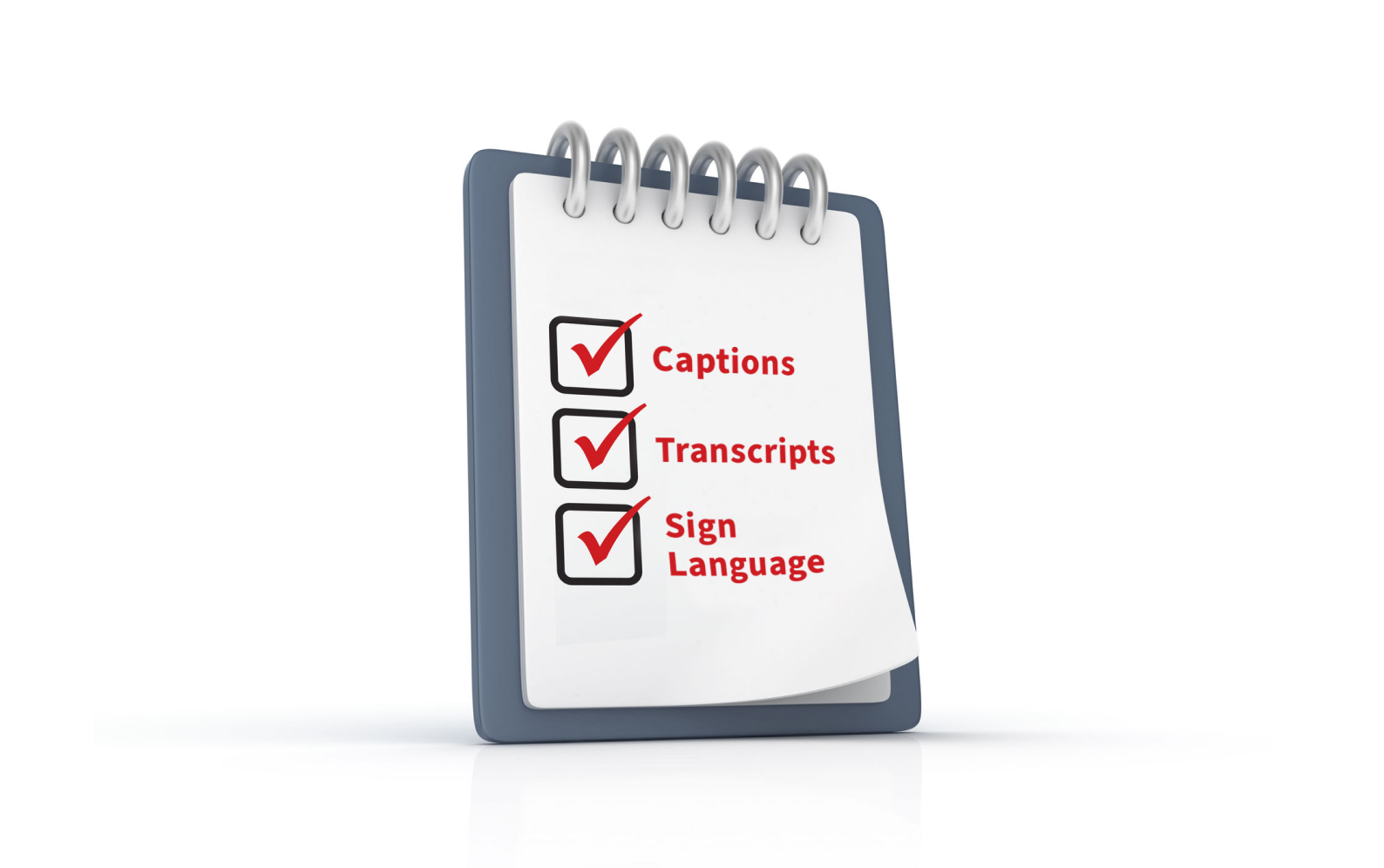So many of us are creating audio and visual content for the developer community, whether that's through Twitter Spaces, livestreams, podcasts, videos, or something else. As the content creation field grows, content creators should ensure that content is accessible. One way w3 describes accessibility is to “provide equal access and equal opportunity to people with diverse abilities.” Because audiovisual content isn’t naturally accessible to everyone, there are best practices to keep in mind. In this post, I'll share tips to help you create accessible video and audio content.
Creating accessible audio and visual content means that your audience can experience it even if they have visual or hearing impairments, cognitive disabilities, neurodiversity that impairs their ability to consume audio or visual content, limited dexterity, or any other reason preventing them from consuming your content.
Definitions
Captions: The written text of what is spoken that appears onscreen as someone is speaking. Captions capture the speaker's words.
Transcripts: The text version of your video or audio that allows the user to read the audio content in one file.
Video
The production that goes into videos can range from simple to complex, live to edited. There’s no one right way to do it, but there are some basic ways to ensure that your video content is accessible. In fact, in the United States, closed captioning for public television has been mandated as part of the Americans with Disabilities Act, and also digital movies must provide closed movie captioning and audio description.
Video Accessibility Checklist
Include closed captions or transcriptions. For clearer directions on acceptable captions, check out the WCAG guide.
Use a clear font for your captions.
Make sure the color contrast of your font and the background of your text is acceptable. To determine if your contrast passes, you can use the WebAim contrast checker.
Synchronize the captions with the audio.
Identify who is speaking.
If you are flashing content on the screen, ensure enough time to view the content. For example, if you’re interviewing a guest and share their social media handles with a textbox on the screen, the viewer should have enough time to view and use the content.
Provide a clear point of focus. If you’re generating captions, make sure that the screen behind and around the captions isn’t overwhelming or difficult to focus on.
If there’s visual information essential to understanding the content, provide a description.
Avoid flashing images that can cause seizures.
Practice standards for high-quality visuals when possible. For example, lighting can help to reduce shadows and allow viewers a clearer path to reading lips and facial expressions.
Audio
With a rise in audio content through podcasts, Twitter Spaces, and other forms of content creation, there should be a clearer focus on ensuring these platforms are accessible to everyone.
Audio Accessibility Checklist
Provide transcripts and captions (where applicable).
If captions are provided, synchronize with the audio, and ensure background contrast and clear font and color.
If there are multiple speakers, identify who is speaking.
Reduce background noise and follow standards for recording clear audio as much as possible. For example, if you’re recording a podcast, you can use headphones and mute yourself when not talking to reduce background noise. For more tips on creating high-quality audio, check out the WCAG Guide.
Provide an audio description if necessary.
Resources
Examples Using Deepgram
Additional Resources for Accessible AV Content Creation
Creating more accessible audiovisual content makes the web more equitable for everyone. It allows your audience more opportunities to engage with your content and learn from it. Consider these checklists as a starting point for creating accessible content.
If you have questions or want to learn more, please hit us up on Twitter, @DeepgramAI.
If you have any feedback about this post, or anything else around Deepgram, we'd love to hear from you. Please let us know in our GitHub discussions .
More with these tags:
Share your feedback
Was this article useful or interesting to you?
Thank you!
We appreciate your response.





